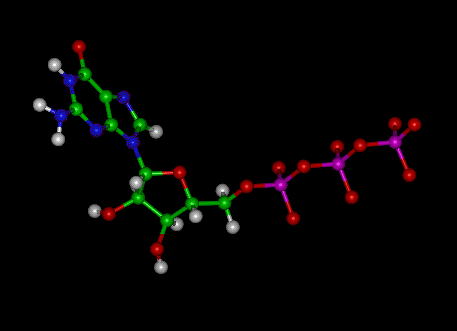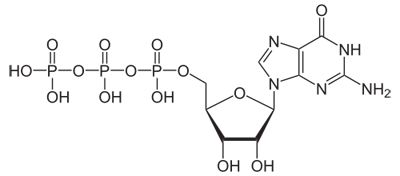GTP Molecule

GTP (also known as guanylyl imidodiphosphate, guanosine-5'-triphosphate, or guanosine triphosphate) is a chemical compound (nucleotide) that is incorporated into the growing RNA chain during synthesis of RNA and used as a source of energy during synthesis of proteins.
For 3-D Structure of the GTP molecule using Jsmol Click here

Image: Molecular Structure of GTP
GTP is also essential to signal transduction in living cells, where it is converted to GDP through GTPases.
GTP is involved in energy transfer within the cell. For instance, one GTP molecule is generated for every turn of the Krebs cycle. This is tantamount to the generation of one molecule of ATP since GTP is readilty converted to ATP.Other triphosphates
Living cells also have other "high-energy" nucleoside triphosphates, such as guanine triphosphate. Between them and ATP, energy can be easily transferred with reactions such as those catalyzed by nucleoside diphosphokinase: Energy is released when hydrolysis of the phosphate-phosphate bonds is carried out. This energy can be used by a variety of enzymes, motor proteins, and transport proteins to carry out the work of the cell. Also, the hydrolysis yields free inorganic phosphate and adenosine diphosphate, which can be broken down further to another phosphate ion and adenosine monophosphate. ATP can also be broken down to adenosine monophosphate directly, with the formation of pyrophosphate. This last reaction has the advantage of being an effectively irreversible process in aqueous solution.